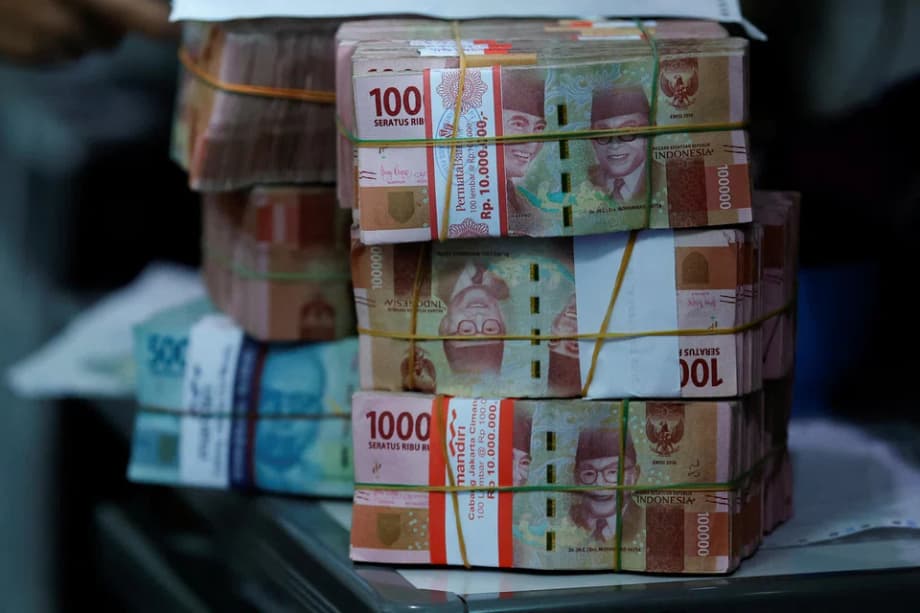Big numbers at the checkout, and why Indonesia wants to fix them
In Indonesia, prices often run into the millions of rupiah. The long strings of zeros can make a routine receipt look intimidating. A cocktail at a high end beach club in Bali can be 190,000 rupiah, a day spa package can easily reach 1.05 million rupiah. Visitors and locals learn to do mental math, yet confusion is common at the checkout.
- Big numbers at the checkout, and why Indonesia wants to fix them
- What redenomination is and what it is not
- Timeline, process, and how money would change hands
- What tourists in Bali and other destinations will notice
- Could prices creep higher during the transition
- Business, banks, and markets
- What about the exchange rate and capital flows
- What to Know
The government is moving to simplify this. A long discussed plan to redenominate the rupiah would remove zeros from notes and price tags to make the currency easier to use. The Ministry of Finance has placed a draft redenomination law in its 2025 to 2029 program with a target to complete the bill by 2027. The central bank supports the idea as a matter of efficiency, while stressing that the policy requires careful timing and strong economic stability.
Redenomination changes how values are written, not what they are worth. A price of 100,000 rupiah today would appear as 100 in the new format if three zeros are removed. The buying power of wages, savings and prices would be the same. The goal is simpler payments, fewer errors, and a currency that is easier to read at home and abroad.
What taking three zeros off would look like
Indonesia has not confirmed the exact number of zeros to be cut in the latest draft, but earlier proposals focused on three. In that case, 1,000 becomes 1, 10,000 becomes 10, and 100,000 becomes 100. Shops would show both versions for a time so that cashiers, customers and accounting systems can adapt. Banks and payment networks would update menus, ATMs and mobile apps to list both the old and the new rupiah during the transition.
Many countries have done this kind of simplification. The common pattern is a long preparation phase, public education, a period of dual prices, and then a final swap when old notes are retired. Indonesia plans a staged process with legal groundwork first, then new designs, and a multi year rollout.
What redenomination is and what it is not
Redenomination is not devaluation and not a cut in the real value of money. It is a change in the unit of account. That means salaries, savings, taxes, fines and fees are all converted at the same ratio. A deposit that reads 5,000,000 today would read 5,000 if three zeros are removed. The value in goods and services does not change, the writing does.
The role of inflation and credibility
Experience abroad shows that a calm backdrop matters. Low and stable inflation, a steady exchange rate, and consistent rules help a smooth change. Surveys of Indonesian citizens have found that many see redenomination as a way to restore the currency’s credibility, which can also make daily life easier. Clear communication is essential so people do not confuse redenomination with past episodes of currency reform in the 1960s, when purchasing power did fall.
For policymakers, the appeal is practical. Cash registers and accounting software can handle fewer digits. Banks process fewer zeros, which trims input errors. For consumers, mental math is easier at markets, ticket counters and taxis. For visitors, the long strings that once made a coffee look like a big purchase would finally shrink to a familiar scale.
Timeline, process, and how money would change hands
The Ministry of Finance set 2027 as the target to complete the legal framework. Officials have said the operational steps would take years. Designs for new banknotes and coins must be finalized. Printers must be prepared, distribution planned, and machines calibrated. A dual period would follow, when both old and new units are valid and listed side by side at stores and on bills. The dual period helps reduce mistakes and builds confidence.
Central bank officials have signaled that the policy will proceed only when conditions are right. Inflation needs to be low, growth steady, and the social and political backdrop supportive. The changeover could take seven to ten years from start to finish, including a long public education campaign that explains conversion tables and answers common questions.
What the central bank says
Perry Warjiyo, Governor of Bank Indonesia, has told lawmakers that redenomination is a major policy that requires careful timing. He emphasized that the central bank is prioritizing currency and price stability while the legal process advances.
“For now, we are more focused on maintaining stability and driving economic growth,” Perry Warjiyo said.
Ramdan Denny Prakoso, who leads Bank Indonesia’s communication department, has explained the aim in plain terms. The goal is to simplify the number of rupiah digits without altering purchasing power, while modernizing the payment system and strengthening the currency’s credibility.
“Redenomination simplifies the way values are written, it does not change what your money can buy,” said Ramdan Denny Prakoso.
Lawmakers on Commission XI, which oversees financial and banking affairs, back a cautious approach. They want the prerequisites in place before the switch, including low inflation, solid growth, and broad stability.
What tourists in Bali and other destinations will notice
Travelers will see cleaner price tags and smaller numbers. The famous feeling of holding a stack of notes worth millions will fade. A 190,000 rupiah cocktail in Bali would appear as 190 in the new unit if three zeros are removed. A 1.05 million rupiah spa day would read 1,050. The cost does not change, the label does.
Budgets do not need to change either. Hotel bills, ride hail fares, and restaurant checks convert at the same ratio. Digital wallets and cards will show both units during the transition. ATMs will eventually dispense the new notes, while older notes remain valid until a formal retirement date.
Tips to avoid confusion during the changeover
Look for dual prices on menus, receipts and tickets. Read the unit labels carefully. If both old and new rupiah are accepted, confirm which one a vendor is quoting before you pay. Use bank owned currency exchange counters or ATMs rather than street kiosks. Count cash in front of the cashier. Cards and mobile payments reduce counting mistakes, especially during the early months.
Fewer zeros can also help reduce errors at busy counters, which is good for tourists and small shops alike. The smaller numbers make mental checks faster, and the risk of misplaced zeros declines.
Could prices creep higher during the transition
One concern is rounding. If a snack costs 9,200 in the old unit, the exact conversion to the new unit might be 9.2. Merchants could be tempted to round up to 10. That kind of rounding can lift the price level if it happens widely. Regulators plan to watch for unfair rounding, publish guidance, and set penalties for abuse.
Indonesia’s financial authorities have studied the track record abroad. Countries that succeeded paired the change with stable inflation, tight consumer protection, clear conversion rules, and a long period of dual pricing. Where inflation was high or public trust was weak, the process was bumpy or failed.
Why communication matters
Public education reduces anxiety and stops rumors. People need to know that bank balances convert one for one to the new unit and that savings are safe. Retailers need training and updated systems. Government agencies must coordinate price monitoring and communicate hotlines for complaints. During the overlap, both old and new notes should be accepted without fuss, and price labels should list both versions.
Business, banks, and markets
Companies will bear costs to update accounting software, cash registers, invoices, vending machines and ATMs. Payment gateways and e commerce platforms need new fields and checks. The projects are manageable with time and standards, but they require budgets and testing.
Capital market regulators say the change should not alter fundamentals. Stock prices, bond coupons and index values would be converted by the same factor. Listings would show smaller numbers, but ownership and valuation stay the same.
Eddy Manindo Harahap, a deputy commissioner at the Financial Services Authority (OJK), described the change as a technical adjustment to reduce zeros in records rather than a shift in value.
“All monetary values will be adjusted with zeros removed, but nothing else will be affected,” Eddy Manindo Harahap said.
What about the exchange rate and capital flows
Analysts have warned that the timing must take the market backdrop into account. The rupiah has faced bouts of weakness against the dollar, and foreign investors have pulled money from local bonds at times. A redenomination during a period of volatility could add noise to pricing and distract from policy goals.
This is why officials keep pointing to preconditions. Inflation must sit near target, the exchange rate should be stable, and confidence must be high. A clear roadmap that explains every step, from dual pricing to the retirement of old notes, can help markets and the public take the change in stride.
What to Know
- Indonesia is preparing a law to redenominate the rupiah, with a target to complete it by 2027.
- The plan would likely remove three zeros, though the final number has not been announced.
- Purchasing power would not change, only how prices and balances are written.
- Bank Indonesia will proceed when inflation is low, growth is steady, and the backdrop is stable.
- The transition could take several years with dual prices and both old and new notes in circulation.
- Tourists will see smaller numbers on menus and bills, while trip budgets stay the same.
- Businesses and banks must update systems, cash registers, ATMs and accounting records.
- Regulators plan to monitor rounding and protect consumers during the switch.
- Capital market values would adjust nominally without changing fundamentals.
- Clear communication and public education are central to a smooth changeover.












